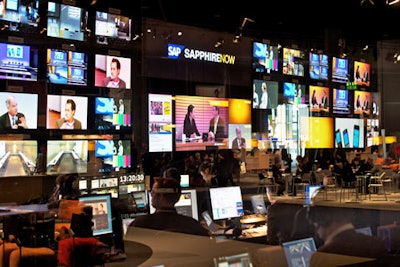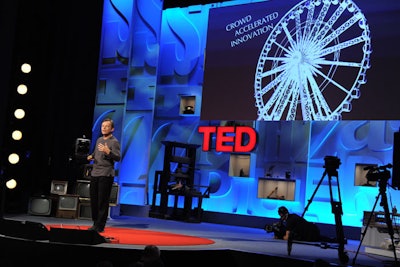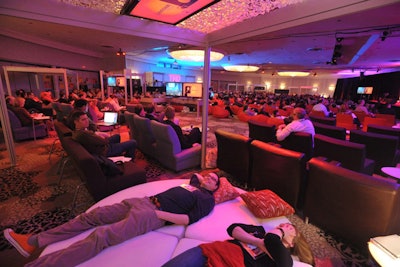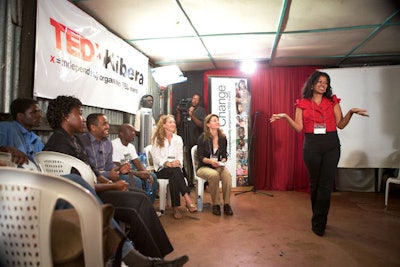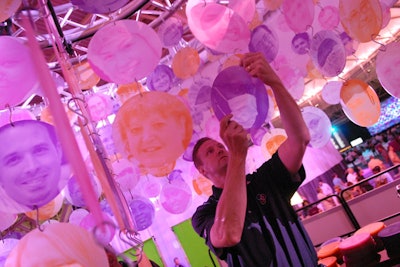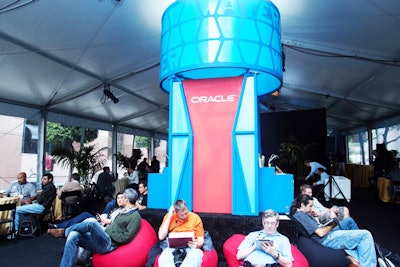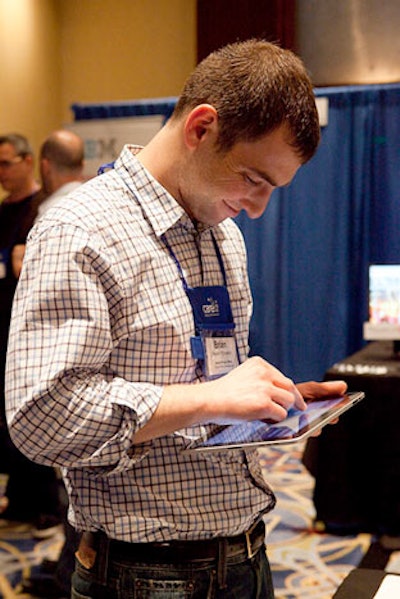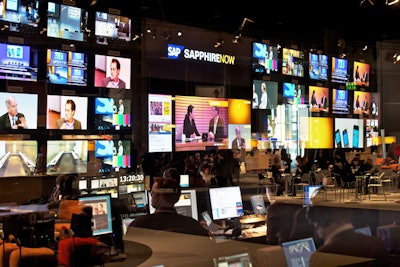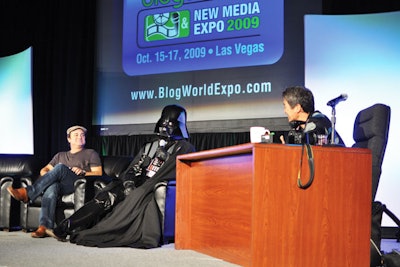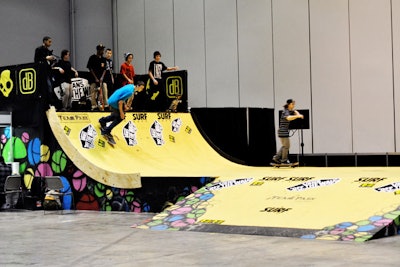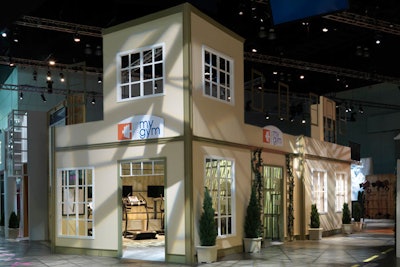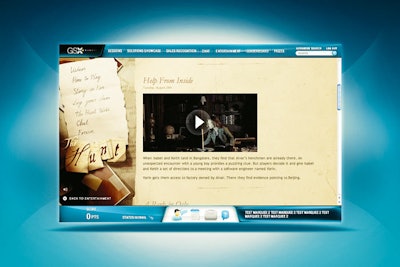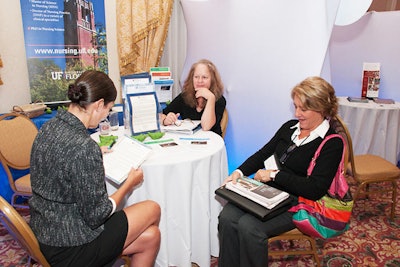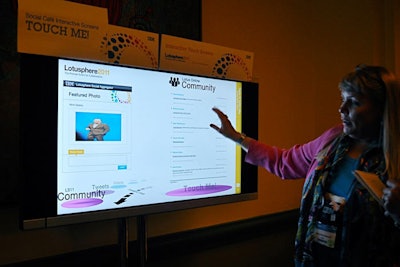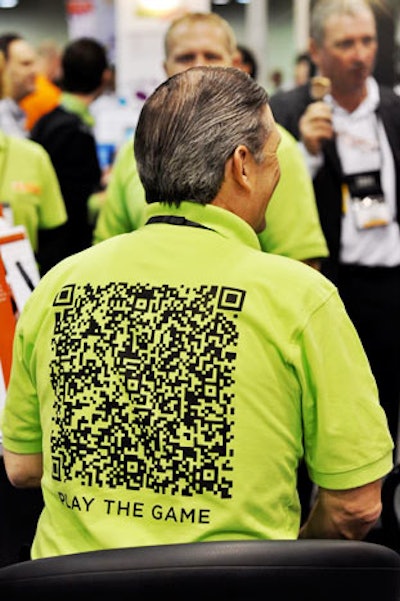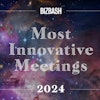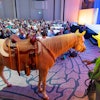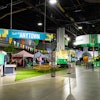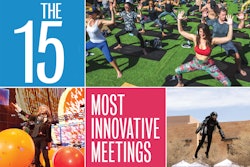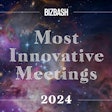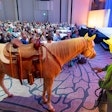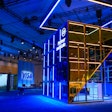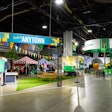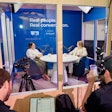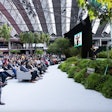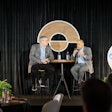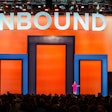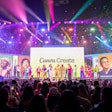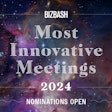 TED chief Chris Anderson speaking at TEDGlobal 2010.Photo: James Duncan Davidson/TED
TED chief Chris Anderson speaking at TEDGlobal 2010.Photo: James Duncan Davidson/TED
Now companies are creating meetings that are not just cost-efficient, but cost-effective. The selection of mobile apps for exhibitors, attendees, and organizers is ever-evolving. Social media platforms can widen the conversation and are now a means to crowdsource content and feedback. Novel approaches to increase participation and engagement are being readily adopted. The green movement is making eco-friendly practices a standard part of operation for venues and suppliers, and pushing hosts and attendees to consider their meetings within a global context. And smart planners continue to find new solutions to old-school problems—either with high-tech tools or good old-fashioned creative thinking—like wooing far-flung attendees and keeping exhibitors happy.
When choosing the events to include, we looked at organizations that are pursuing these new avenues, and that are seeking long-term solutions beyond gimmicks and one-off experiments to build bigger brands and relationships with attendees, exhibitors, sponsors, and other partners. With tangible results, each of the 14 gatherings highlighted demonstrate how such options are setting the stage for smarter, results-driven meetings. They also help prove the power of well-produced meetings, and their value in a larger business context.
Leading the Pack
TED Conferences
It’s no secret that the Technology, Entertainment, and Design (TED) Conference has a strong following. The $6,000 tickets for the annual four-day gathering in Long Beach sell out a year in advance, and the speakers and attendees include politicians, entrepreneurs, activists, Nobel laureates, musicians, and Hollywood bigwigs. The brand has long been celebrated for its session style—where presenters speak about global issues, new technology, business, and scientific breakthroughs for no more than 18 minutes—and the engaging talks at its conference. In 2004, author Malcolm Gladwell famously related the invention of chunky spaghetti sauce to human nature at TED, and in 2009, Bill Gates made headlines for releasing mosquitoes whilst speaking about malaria.
But TED’s identity has become larger than its original conference, and the big-name guests and captivating presentations are only part of the package. TED’s other strengths lie in the innovative ideas publishing entrepreneur Chris Anderson has introduced since taking over the event from founder Richard Saul Wurman in 2001; he now operates it through his nonprofit the Sapling Foundation. Under Anderson’s curatorship, the gathering, previously accused of being elitist, has turned outward, incorporating brand extensions and open-source formats to involve a larger audience.
For one, TED started distributing its content for free, posting videos of speakers (dubbed TEDTalks) on its site, iTunes, and YouTube. The viral expansion in 2006 increased the scope of the conference in a big way; to date, there are more than 700 TEDTalks available, which have been viewed more than 350 million times. Moreover, a program allowing volunteers to translate the talks into non-English languages has boosted viewership since launching in 2009. In its first year, traffic from outside the U.S. grew by 350 percent.
“TED’s mission is to spread good thinking globally, and so it’s high time we began reaching out to the 4.5 billion people on the planet who don’t speak English,” Anderson said when the project was introduced. “We’re excited to be using a bottom-up, open-source approach that will in time allow all our talks to be translated into all the world’s languages.”
Making the talks accessible prompted a new branch of the brand, TEDx, a concept that enables anyone to host a TED-style gathering. This took the movement and popularity of the conference to a grassroots level.
“The TEDTalks really transformed the TED brand in that it moved it into this global sphere and was no longer just a conference. More and more people started coming to us, asking if they could hold an official TED conference,” said Lara Stein, the organization’s licensing director, who oversees TEDx. “So Chris and I started experimenting with what it would look like if we sort of gave away our brand in a very open-source way.” For the nonprofit’s small staff, allowing others to produce spin-offs using TED’s concept lets the brand leverage its platform without tripling the workload. “The idea of doing more than two, maybe three conferences a year is about as far as we can take it for us internally producing,” Stein says.
To pioneer the venture, TED partnered with the University of Southern California for TEDxUSC, held in March 2009 at a university auditorium. From the experience, Anderson and company were able to refine guidelines for TEDx events but still allow for local themes and speakers. Organizers of such gatherings require a free license and cannot promote any commercial, religious, or political agenda. Stein says the team is still refining rules concerning event programming, marketing, and sponsorship.
“A lot of what I do is listen to the community and try to figure out how to shape the guidelines based on what I hear. It has to be built with a great deal of flexibility, because it’s a global program and what works in the slums of Kibera [in Nairobi] doesn’t necessarily work in a 600-person venue in Amsterdam or Paris,” she says.
A recent addition to the model is TEDxLive, where TEDx events can stream Webcasts. This was available during TEDWomen, the two-day, female-focused convention held in Washington in December, and TED2011, the flagship conference in Long Beach.
This is not the organization’s first foray into simulcasting. TED-Active, which grew out of a satellite event in Aspen in 2008 and now takes place yearly in Palm Springs, offers a hybrid format, with live broadcasts of the sessions in Long Beach, as well as on-site activities. More informal than the main conference, TEDActive allows attendees to shape the content, suggesting ideas, hosting discussions, and participating in group workshops.
“Each year we’ve taken the participation component and really turned up the volume on it. We always try to provide a platform for attendees to organize things,” explained TEDActive director Kelly Stoetzel, who is also content director at TED. “This year we’re sponsoring a new initiative that takes things a step further, which is the ‘Projects’ initiative. We have six different themed projects, and attendees can sign on to do one of them.” The idea is for attendees to take a theme—such as education, travel, or sustainability—identify a challenge around the topic, and brainstorm active steps that can be taken to meet the challenge.
“At TED we’ve become a little obsessed with this idea of openness,” Anderson said during his presentation at TEDGlobal 2010. “We opened up our talks to the world, and suddenly there are millions of people out there helping spread our speakers’ ideas, and thereby making it easier for us to recruit and motivate the next generation of speakers.”
Building Attendee Engagement
Boston Scientific’s Group Employee Meeting
Setting out to motivate its newly formed Cardiology, Rhythm, and Vascular division, Boston Scientific gathered 5,000 employees at the Minneapolis Convention Center for an interactive, participant-driven meeting in August. As the first time the workers—previously separated into two independent branches—had convened, the meeting was designed to communicate the vision and values of the new group, as well as build trust and confidence in the leadership team. To achieve this, an internal planning committee collaborated with a crew of vendors, led by producer Cheryl E. Kranz of Creative Events by Kranz, and integrated several components to facilitate an open, two-way conversation between employees and executives.
One important aspect was making senior management, including C.E.O. Ray Elliott, who’d been installed the year before, accessible and available to answer candid questions from employees. “Our executives were willing to listen. They knew this was a situation where we needed to consider new ways of doing [a meeting], and they were open to it,” said the division’s director of events and production, Kim Granger, who was part of the planning committee. Just as key was allowing employees to give feedback.
Before the meeting, Boston Scientific invited attendees to pose questions to the leadership team via an online system, queries Elliott and CRV president Hank Kucheman incorporated into their opening speeches. In the breakout session, town-hall-style forums let managers connect with their departments, employees could submit ideas at computer stations (and others could vote on them), individuals and groups could record video messages, facilitators helped lead conversations in fishbowl seating arrangements, and anyone could sign a “quality wall” to pledge their commitment to company values.
The organizers also planned activities to reinforce team spirit, including a treasure hunt that required attendees to go through all areas of the breakout space.
Boston Scientific was so pleased with the results—on-site surveys showed 73 percent of attendees were optimistic about the company’s future—it decided to host yearly meetings for the group. “There were so many parts about it that were fun and that we tried that were different,” said Granger. “We do want to hold it annually. It may not always be the same and may morph into different formats, but feedback will be an intentional component to see where we are and get that perspective.”
Going Green—Long-Term
Oracle’s OpenWorld
In 2006, business technology provider Oracle was concerned by the environmental impact of its largest user event, OpenWorld, and looked for ways to implement eco-friendly changes to reduce its footprint and mirror the company’s own corporate citizenship commitments. Since then, the push has evolved into an ongoing program integrated into the planning process for the 41,000-person conference in San Francisco.
“We really wanted to create a big initiative that could go beyond just product leadership, to another kind of leadership—one where the practices we put in place...[could] make sustainable events a standard practice,” said Paul Salinger, Oracle’s vice president of marketing. As part of the team behind the conference, Salinger is responsible for driving the company’s sustainability model and is the 2011-2012 president of the Green Meetings Industry Council.
Oracle’s strategy for reducing waste at its meeting encompasses several areas, from the elimination of bottled water and use of recycled and recyclable materials to sourcing food from local providers, encouraging attendees to take mass transit, and working with partner hotels, suppliers, and exhibitors to incorporate greener techniques. OpenWorld’s 2007 iteration—its first sustainable run—is used as a baseline, a reference point from which to build on year after year.
At the September 2010 event, 77 percent of menu ingredients were sourced within 100 miles of the conference venue. Fifty percent of the signage was printed in San Francisco. Fewer pages and smaller print runs lowered the show’s daily paper volume by 76 percent, and 100 percent post-consumer recycled stock was used for collateral publications.
Even with those impressive statistics, Salinger admits there was initial resistance to the program. “We have worked hard to dispel the myth that green meetings cost more,” said Salinger. Indeed, Oracle estimates that OpenWorld saved $800,000 in 2009.
Integrating Social Media
NTEN
The Nonprofit Technology Network’s conference—known as NTEN—operates as a kind of live-action demo for new meeting tech trends, from live-blogging to the use of mobile devices for processing donations. At the March 2010 conference, executive director Holly Ross focused on integrating social media into conference planning and execution.
NTEN built an online platform where the 1,900 attendees could register, peruse session proposals, and network. “We want the people to connect before they get to the show,” Ross said. For 2012, Ross plans to link the platform with Facebook to give attendees another contact point. Agenda development is done now via crowd-sourcing: Anyone can submit a proposal for an education session, and prospective attendees can vote and comment on the options.
To drive people to the site, NTEN cut back on other forms of communication. The group also made concessions to the economy’s effects on travel budgets. Members who can’t attend in person can buy a remote pass to view sessions online, ask questions in real time, and contact other registrants.
Bridging Live and Online Conferences
SAP AG’s Sapphire Now
After experimenting with a virtual component at its 2009 customer and partner conference in Orlando, German software company SAP AG rolled out a fully integrated hybrid platform for the May 2010 run. The new meeting, dubbed Sapphire Now, mixed simultaneous gatherings in Florida and Frankfurt, Germany, with an extensive Web-based environment and resulted in record attendance levels. SAP estimates that the 2010 conference drew a total of 50,000 attendees (up from 18,000 the previous year), with 10,500 and 5,000 in Orlando and Frankfurt, respectively, and 35,000 online.
“In 2009, we created a solid virtual event world, but it wasn’t truly integrated into the fabric of the physical event. The virtual platform didn’t serve the content the way people consume the content,” explained SAP global chief marketing officer Marty Homlish, who led the conception and execution of Sapphire Now. “The transformation in 2010 was radical. We truly wanted to understand how people consumed the content first, and the reach was so much greater. We built a model where customers are talking with other customers, and allowed all attendees to create their own agenda and experience—both online and offline.”
The centerpiece of the format was the construction of two high-definition broadcast centers on the show floors of both locations. Staffed with experienced news anchors, the studios provided interviews with keynotes, augmenting the session talks. Virtual attendees also could pose questions during a session via a facilitator, as well as participate in informal discussion rooms through the use of sound and video. And to incorporate the wider conversation, social media was built into the Web interface, linking Sapphire Now’s Twitter feed, LinkedIn group, and Facebook page.
Those physically present at the conference could also connect to the online forums using touch-screen kiosks or access updates and tag content on their phones via a mobile platform.
And there are more upgrades coming. “In 2011, we’re bringing Sapphire Now to even more audiences around the globe and throughout the year. We’re adding Sapphire Now events in Beijing and Europe, the Middle East, and Africa in November, and colocating these with SAP TechEd [a workshop and demo conference], for a 360-degree immersive SAP experience,” Homlish said.
Curating Conference Content
BlogWorld
BlogWorld & New Media Expo, an annual event that draws 3,000 bloggers to Las Vegas in October and streams to millions of online followers, believes in a divide-and-conquer approach to content organization. This means meeting bloggers in their own narrow slices of the digital universe: Vertical “community tracks” cater to insular crowds of medical bloggers, mommy bloggers, travel bloggers, food bloggers, and other niche markets.
“A lot don’t get outside of their own particular community,” says BlogWorld C.E.O. and co-founder Rick Calvert. Offering narrowly focused content is a more likely to draw them to the event. “Then, they get to the event and realize they’re actually part of a bigger community.” BlogWorld has roughly doubled its attendance since its inception in 2007. Calvert says, “Our mission is to help the whole industry of new media grow and foster a convergence,” but that means rethinking traditional broad-brushstroke educational programming.
BlogWorld bucks one popular new media trend: It doesn’t crowdsource content, although it does ask followers for input via Facebook, Twitter, and its blog. Instead, to come up with material for the 150 sessions that run over the three-day event, Calvert and his team comb the blogosphere, looking for popular writers and hot topics. Since bloggers are a vocal—and opinionated—lot by nature, Calvert says crowdsourcing could turn BlogWorld into a popularity contest.
Once Calvert’s team has identified a viable niche, they contract with an outside expert—often a top blogger in the field—to coordinate a minimum of one day’s worth of sessions and act as a liaison between the production team and attendees. These track leaders, as they’re called, are paid a small stipend to help recruit speakers, develop content, determine the size of the track, and help market it. Since crack blogging skills don’t always translate into dynamic speaking powers, Calvert has begun encouraging entrants to submit a video along with other materials to gauge their comfort level in front of an audience.
Depending on the leader’s level of conference experience, BlogWorld’s in-house team pitches in and offers guidance, tweaking topic suggestions or streamlining the schedule. For topics that are common across tracks, such as monetization, Calvert will often convene a panel, both to keep the education from being repetitive and to encourage cross-pollination between genres.
Managing Noise
Surf Expo
With activities like fashion shows, skateboarding competitions, and stand-up paddleboarding lessons, the Surf Expo could be a noisy place to conduct business, and that can upset exhibitors. However, organizers—serious about monitoring sound levels—at this year’s run in the Orange County Convention Center in Orlando in January used a free iPhone app Decibels by David Bannach to keep the din down. “We needed a simple, always accessible device to measure sound decibels,” explained expo director of marketing Dan Darby. "At each sound check, we’d measure the decibels from our iPhone and then mark the level on the soundboard.”
Integrating Mobile Technology
The Cable Show
When the National Cable & Telecommunications Association developed its first smartphone application for the 2010 iteration of the Cable Show, it wanted a platform that would improve, but not complicate, the experience for convention attendees and exhibitors. Working with developer Core-Apps, the association designed an interactive tool to provide show visitors—some 13,000 network C.E.O.s, Silicon Valley executives, and other media professionals—with access to the 152,000-square-foot floor plan, exhibitor materials, a Twitter feed, and information on sessions and speakers for the three-day convention in Los Angeles. In particular, the app hosted a detailed map of the industry exhibit, a 27,000-square-foot space modeled after a studio back lot that housed new consumer entertainment and communications technology in replicas of a home, park, gym, hotel, cinema, school, and sports bar.
“We see the app as not only making the show experience better, but from a practical standpoint, the more people download the app, the less need there is for paper,” said Mark Manlove, the director of convention marketing for the Washington, D.C.-based association. He added that the platform will be upgraded for this year’s expo in Chicago in June. “As everybody gets used to going to the show and having it all on their smartphone, it makes it more efficient on the production end for us.”
With the popularity of the tool—more than 5,000 downloads of the mobile app and 19,000 requests for exhibitor information—the association will add new sponsor opportunities for exhibitors, such as banner ads and the ability to post video content.
Boosting Online Interaction
Cisco’s Global Sales Experience
Cisco Systems built an entirely virtual platform for its September 2009 Global Sales Experience meeting—known as GSX—taking a 20-year-old in-person conference online. The move, which resulted in 90 percent cost savings and allowed the company to expand its reach to an audience of 19,000, brought its own set of challenges.
Recognizing that without face-to-face networking, the Web-based conference needed an interactive hook, senior manager of the global sales experience Angie Smith created an alternate-reality game with the help of virtual event provider InXpo, along with experiential marketing agency George P. Johnson.
“Understanding that sales is an inherently competitive world, we designed GSX from the ground up to tap into that behavior and create collaboration at the individual, team, and departmental level,” Smith explained.
Launched three weeks before GSX, a game called “Threshold” succeeded in attracting more than 13,000 players. Styled like a James Bond thriller, the interface put participants through a virtual scavenger hunt, looking for clues hidden in videos, sound files, and even conference sessions to learn who stole a piece of Cisco technology. For the 2010 meeting, which followed hybrid model by combining physical events with online components, Smith scaled back the gaming tool so that it wouldn’t detract from the sessions and still motivate the sales force. Participation didn’t fall—with more than 21,000 attendees, last year’s conference hosted nearly 18,000 unique visitors to its virtual platform.
Exhibition Layout
American Academy of Nursing Meeting
How do you convince attendees to linger at a conference? Make it cozy. Last September, Gale Quilter Guerrieri, meetings and event manager for the American Academy of Nursing, rethought the space that housed 40 exhibitors for the biennual Council for Advancement of Nursing Science. Guerrieri eschewed sharp angles in favor of round tables and cushy chairs, framed by fabric-draped walls underlit with blue lights for a tranquil effect. “[Exhibitors] said people were engaged... and that there was a sense of calm in the room so they could concentrate,” Guerrieri said. The layout was such a hit that Guerrieri added sofas and end tables to the networking lounge at the AAN’s annual conference two months later.
Connecting Buyers and Sellers
International Builders’ Show
At this year’s International Builders’ Show in Orlando, the National Association of Home Builders tried a new promotion that offered discounts to attendees and generated leads for exhibitors. A month before the January expo, the association emailed offers from 10 participating companies to registered and potential showgoers, with each deal available for only 24 hours. The vouchers could then be printed and redeemed on the show floor. “So the good news for the exhibitors is, they’ve already locked in some very good leads before they ever got to the show,” said Mark Pursell, the association’s senior vice president of exhibition marketing and sales. “And we used it to promote registration for the show, because the only way you could take advantage of the deals was if you were registered.”
Luring More Exhibitors
ABC Kids Expo
What started in 2003 as a trade show for mom-and-pop retailers of infant and child clothes, toys, and gear has grown to nearly a million square feet. Produced by All Baby & Child Inc., the ABC Kids Expo has grown from 489 exhibitors to 1,003 in 2010, and it’s on track to surpass that this year, according to production and promotion manager Eric Seemann.
Seemann credits the show’s growth with several strategic layout and programming decisions. “We broke it down by categories like furniture and bedding—made it more like a department store,” he said. New exhibitors are grouped in a cluster near the main entrance to increase their exposure, while parts of the show floor are carved out for high-design and eco-friendly offerings—areas dubbed “modern child” and “naturally kids,” respectively. Goods like Bugaboo strollers fill the former; the latter is reserved for vendors with a green focus.
Last year, ABC added an in-hall fashion show to complement the expo’s new “maternity square” section. Models with prosthetic tummy bumps showed off maternity wear, diaper bags, and strollers. Seemann says all 100 seats were filled and that he plans to repeat the concept this year.
To cope with a slump brought about by the recession in 2009, ABC decided to extend its early-bird exhibitor pricing deadline by five months. In addition, recognizing that the nation was facing its biggest economic shock since the Great Depression, Seemann allowed some exhibitors to pay for their booth space in installments. Although the expo lost 263 booths, attendee numbers still grew, and the drop in exhibitor numbers reversed
itself by last year.
The show works to draw new audiences for its exhibitors, too. Until its fifth year, the show didn’t allow buyers from big chain like Babies ‘R Us in the doors, a decision it rethought after ABC staff found out chain buyers were creating fake names and credentials to gain access. Now, the first day of the show is reserved for independent retailers.
For 2011, the show is moving from its traditional Las Vegas home to the Louisville Convention Center in Kentucky, a move Seemann said was dictated by the available venues over the traditional dates for his rapidly growing expo.
Streamlining and Tracking Content
I.B.M.’s Lotusphere
With so many active Twitter users, blog updates, Facebook discussions, and Flickr posts, keeping track of the online conversations can be a complicated and time-consuming activity for conference attendees and organizers. To simplify this task at the January 30 through February 3 run of its Lotusphere conference, I.B.M. built a social media aggregator to pool the content of various forums into one online page.
“We really wanted to demonstrate how to integrate social applications into how you do business and to showcase our technology to attendees,” says I.B.M. director of marketing Kathy Mandelstein, adding that the strategy also played this year’s theme of “social business.”
The single landing page also served as a place for the tech giant to broadcast videos of the conference’s three keynote sessions and interviews with speakers. To augment this stream, the organizers crowdsourced audiovisual content from show-goers by lending them Flip video cameras to shoot any aspect of the event, snapshots that were later edited and posted to the aggregator site.
The experience wasn’t entirely virtual: I.B.M. created five “social media cafés,” each replete with small tables and a large, touch-screen monitor where visitors could access the aggregator and send the information directly to their email accounts. A custom program from media sponsor Gowalla encouraged attendees to move about the show floor, taking nine “trips” by checking in at more than 300 locations around the conference. Users could then post photos of these stops on Twitter and Facebook.
By the penultimate day of Lotusphere, the site had 34,000 views of the video channel and more than 20,000 tweets tagged with the #ls11 hashtag. Mandelstein said initial data showed the site was receiving more than half of its traffic from outside the U.S., giving the conference “much broader reach globally.”
I.B.M. took a similarly clutter-free approach to reduce print-outs, utilizing Q.R. codes—square images embedded with data that can be read by a smartphone’s camera—at all of its booths in the product showcase instead of distributing paper materials. Additionally, I.B.M. vice president Mike O’Rourke used a code during his presentation, supplying the audience with link to his session notes that could be saved and referenced later.
Sparking Online Content
WWDMagic
In February, biannual apparel trade expo WWDMagic looked to generate more conversation among attendees and expand its audience beyond the show floor of the Las Vegas Convention Center by bringing 35 bloggers to an interactive lounge. To form the base, WWDMagic and partner Teen Vogue selected 15 Web writers, and then chose the rest through a contest hosted on FashionablyMarketing.Me and the event’s Tumblr site. At the show, the bloggers not only provided daily commentary by reporting on trends, recording video segments, and participating in panel discussions, but also competed for prizes, including the opportunity to be the official correspondent for the show’s August run. The new platform also contributed to Magic’s online presence with the blog coverage aggregated on dedicated Tumblr and Whrrl channels.
